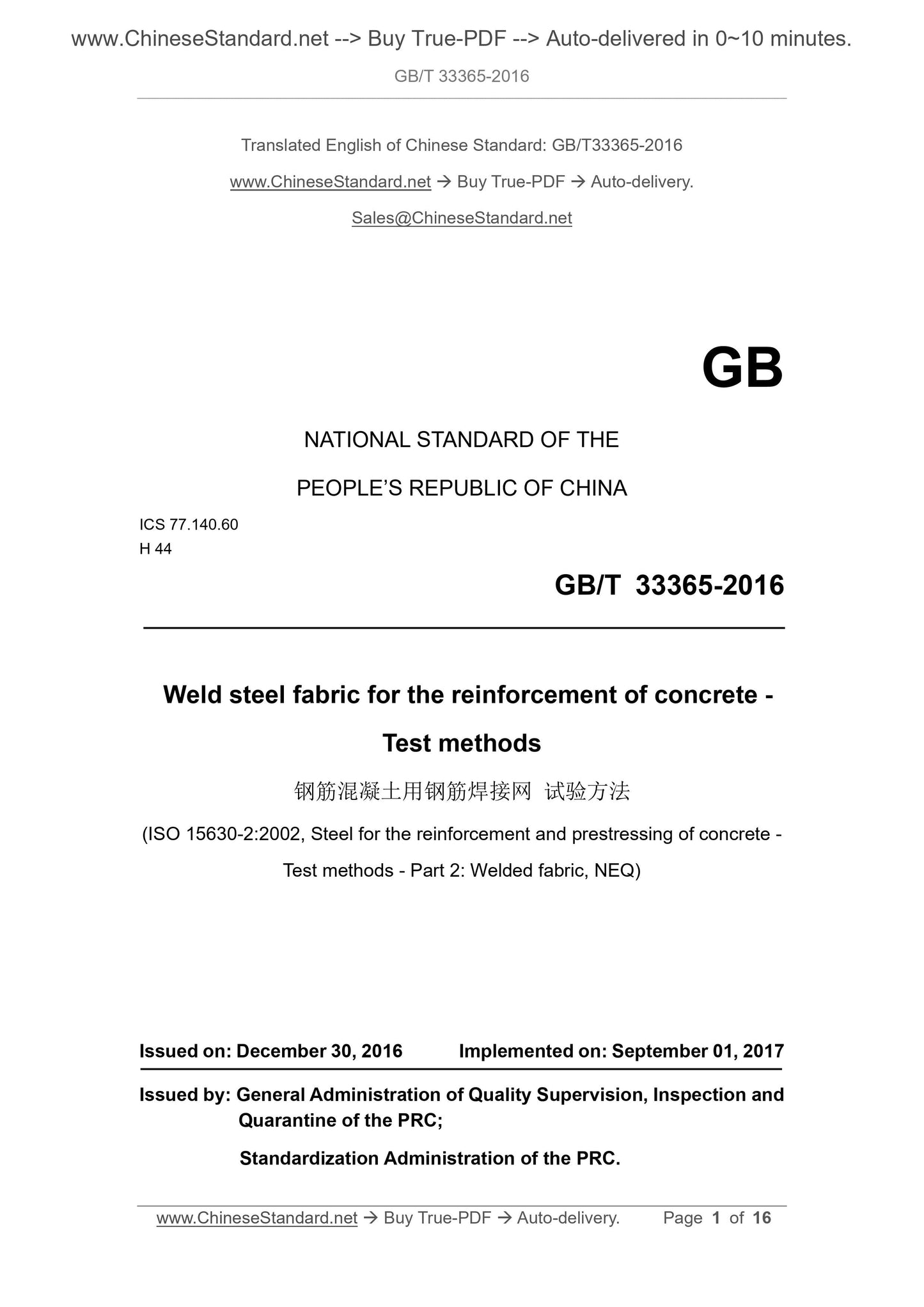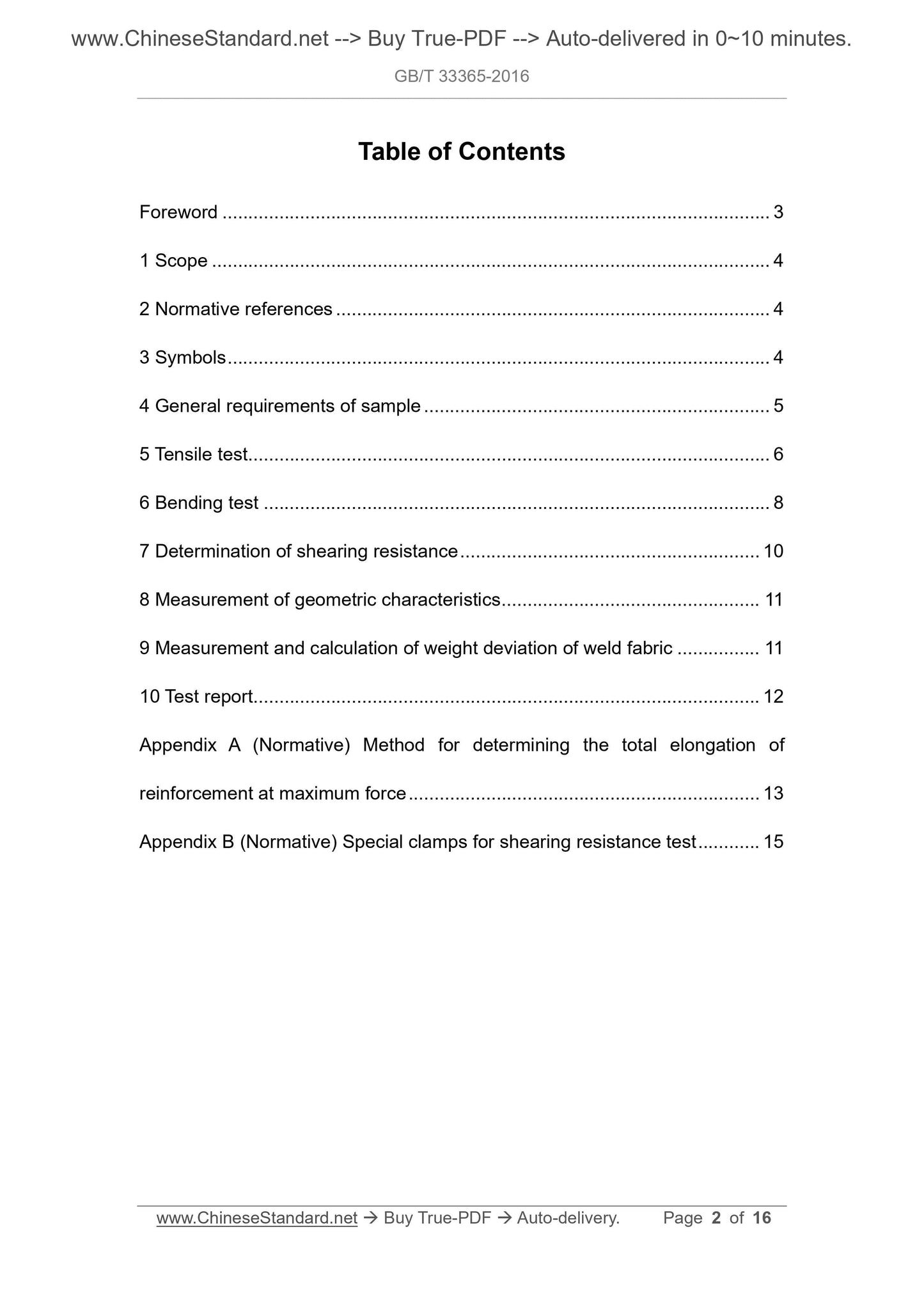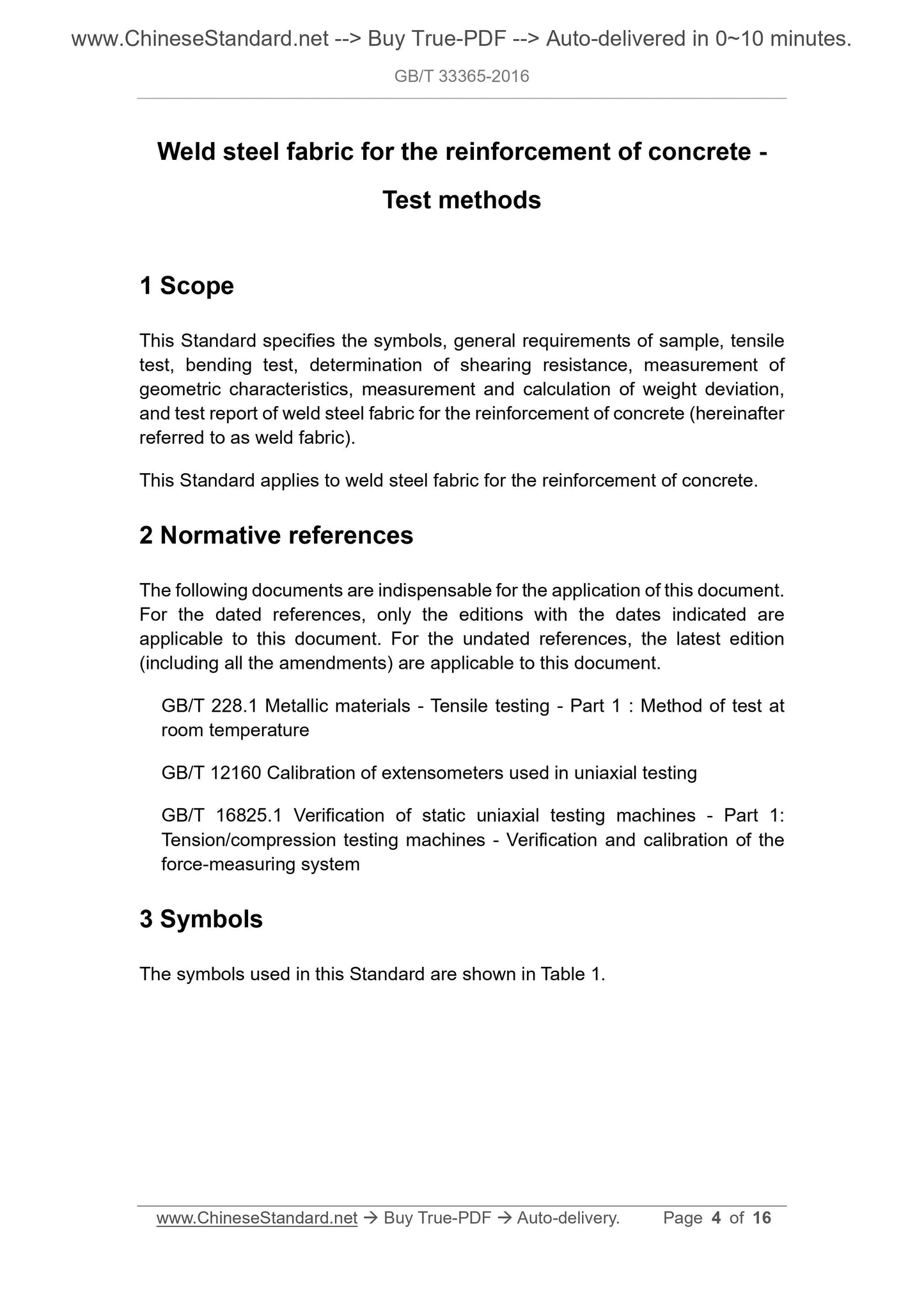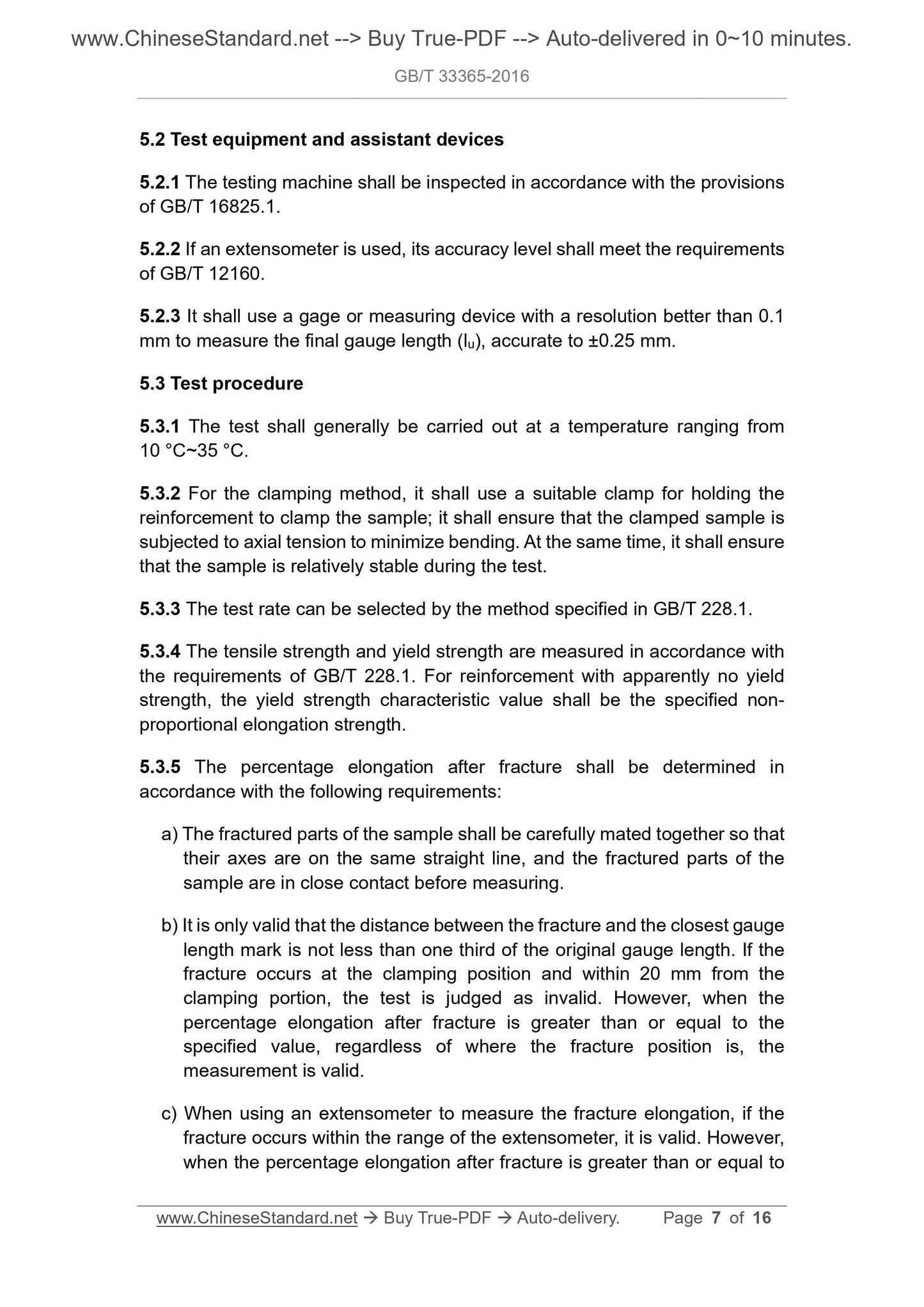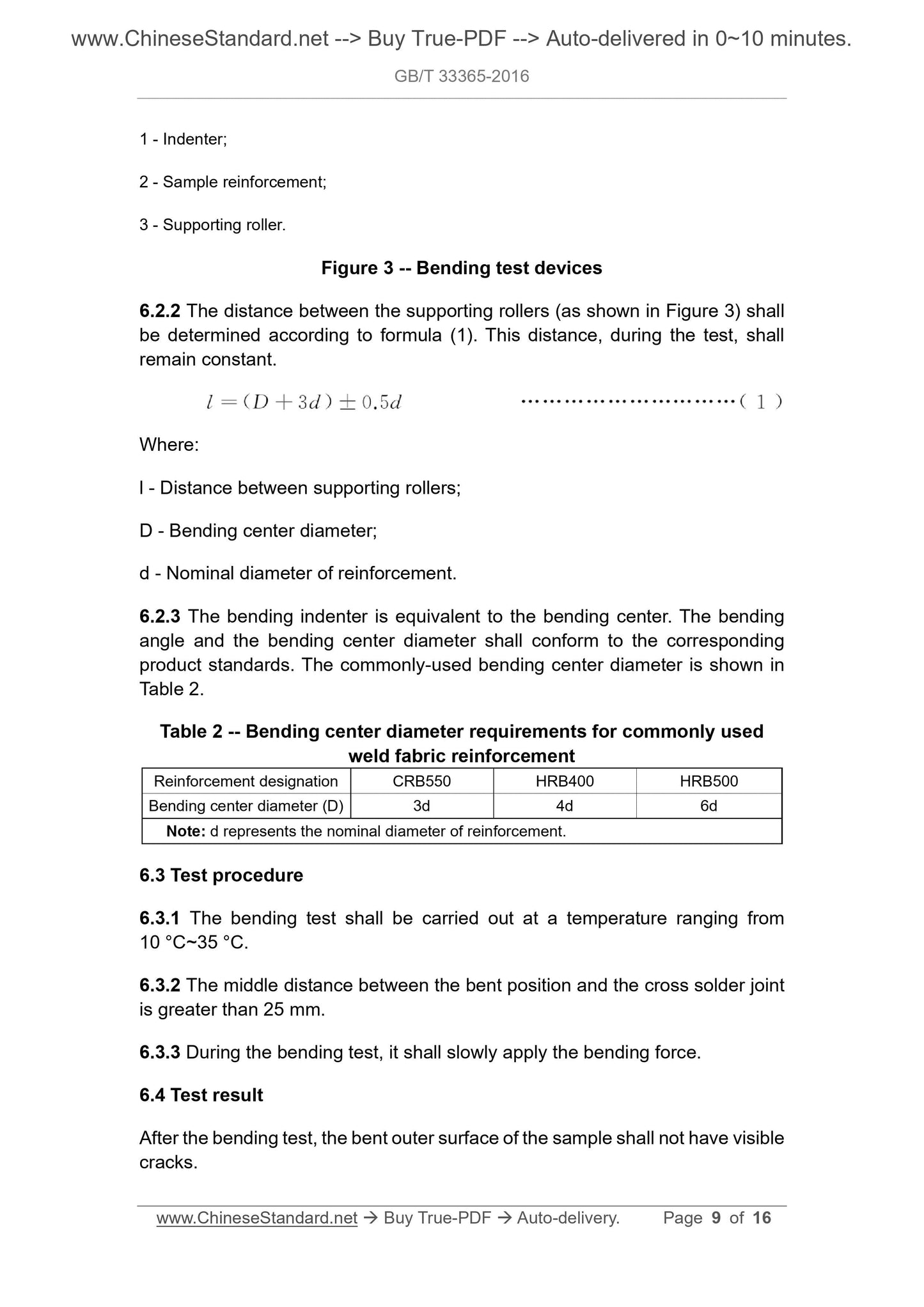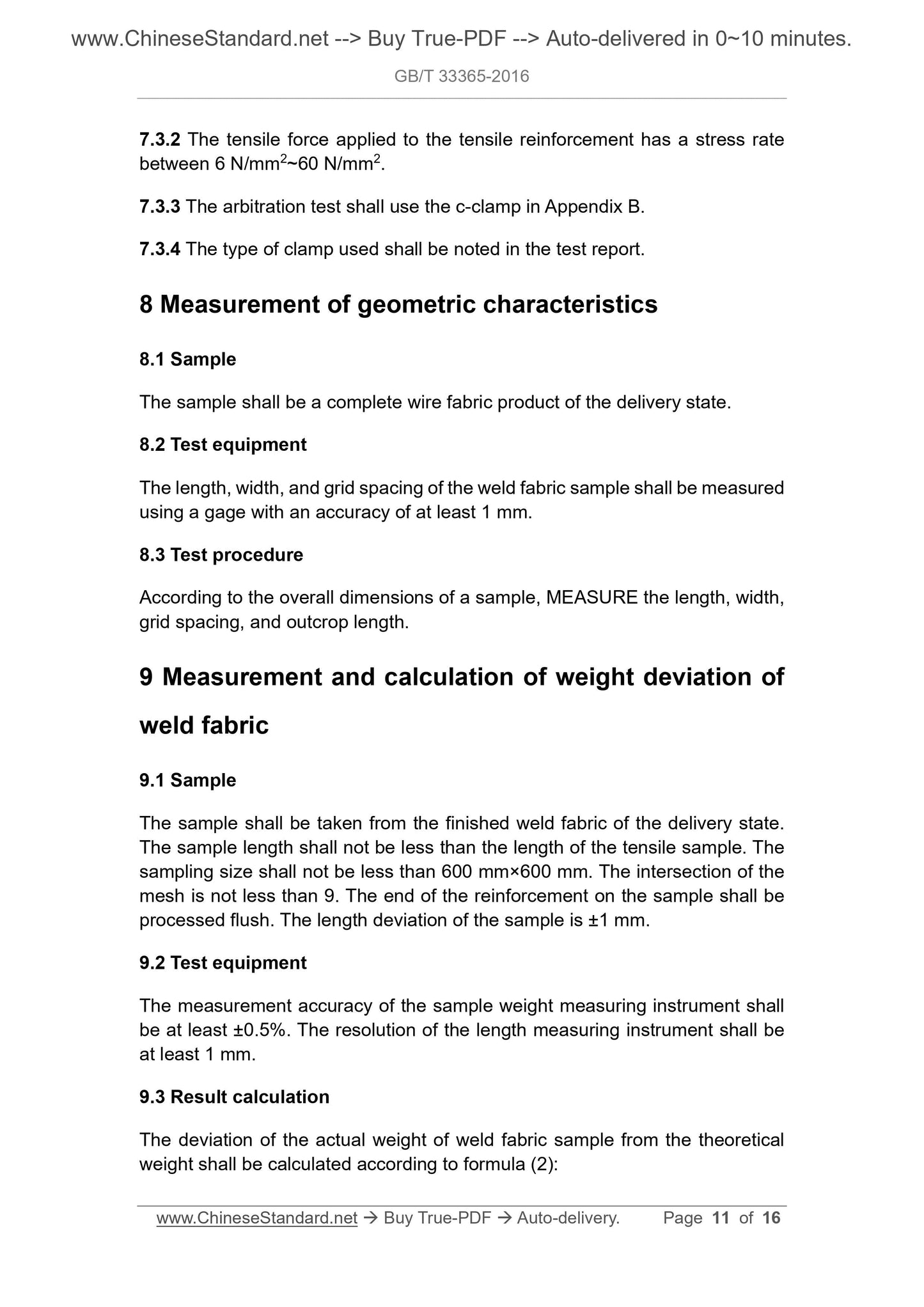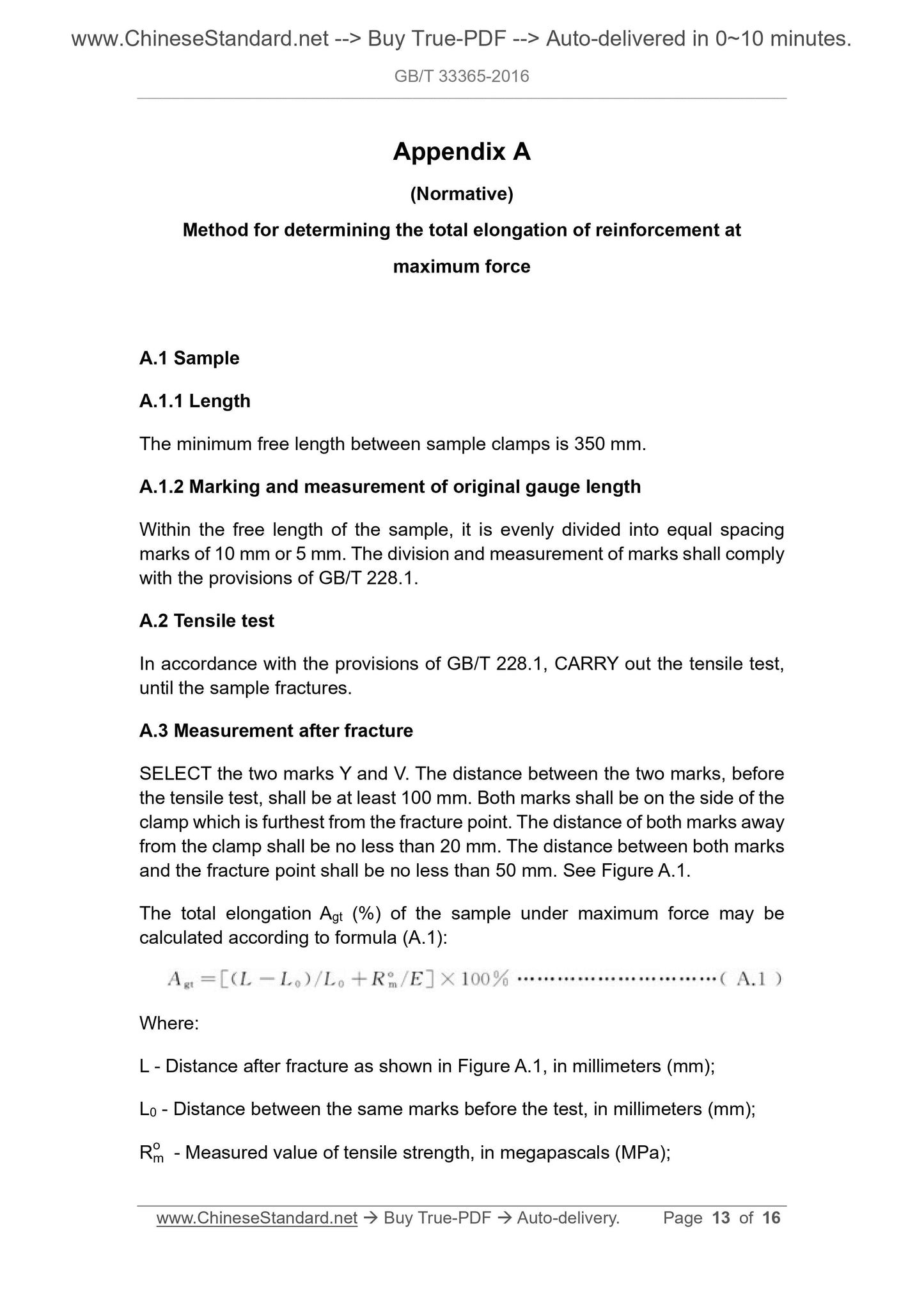1
/
of
7
www.ChineseStandard.us -- Field Test Asia Pte. Ltd.
GB/T 33365-2016 English PDF (GB/T33365-2016)
GB/T 33365-2016 English PDF (GB/T33365-2016)
Regular price
$180.00
Regular price
Sale price
$180.00
Unit price
/
per
Shipping calculated at checkout.
Couldn't load pickup availability
GB/T 33365-2016: Weld steel fabric for the reinforcement of concrete -- Test methods
Delivery: 9 seconds. Download (and Email) true-PDF + Invoice.Get Quotation: Click GB/T 33365-2016 (Self-service in 1-minute)
Newer / historical versions: GB/T 33365-2016
Preview True-PDF
Scope
This Standard specifies the symbols, general requirements of sample, tensiletest, bending test, determination of shearing resistance, measurement of
geometric characteristics, measurement and calculation of weight deviation,
and test report of weld steel fabric for the reinforcement of concrete (hereinafter
referred to as weld fabric).
This Standard applies to weld steel fabric for the reinforcement of concrete.
Basic Data
| Standard ID | GB/T 33365-2016 (GB/T33365-2016) |
| Description (Translated English) | Weld steel fabric for the reinforcement of concrete -- Test methods |
| Sector / Industry | National Standard (Recommended) |
| Classification of Chinese Standard | H44 |
| Word Count Estimation | 11,124 |
| Date of Issue | 2016-12-30 |
| Date of Implementation | 2017-09-01 |
| Quoted Standard | GB/T 228.1; GB/T 12160; GB/T 16825.1 |
| Adopted Standard | ISO 15630-2-2002, NEQ |
| Regulation (derived from) | National Standard Notice No.27 of 2016 |
| Issuing agency(ies) | General Administration of Quality Supervision, Inspection and Quarantine of the People's Republic of China, Standardization Administration of the People's Republic of China |
| Summary | This standard specifies the symbols for the reinforced concrete welded wire mesh (hereinafter referred to as "welded wire mesh"), the general requirements of the specimen, the tensile test, the bending test, the measurement of the shear force, the measurement of the geometric characteristics, the measurement and calculation of the weight deviation, experiment report. This standard applies to reinforced concrete welded wire mesh for reinforced concrete. |
Share
